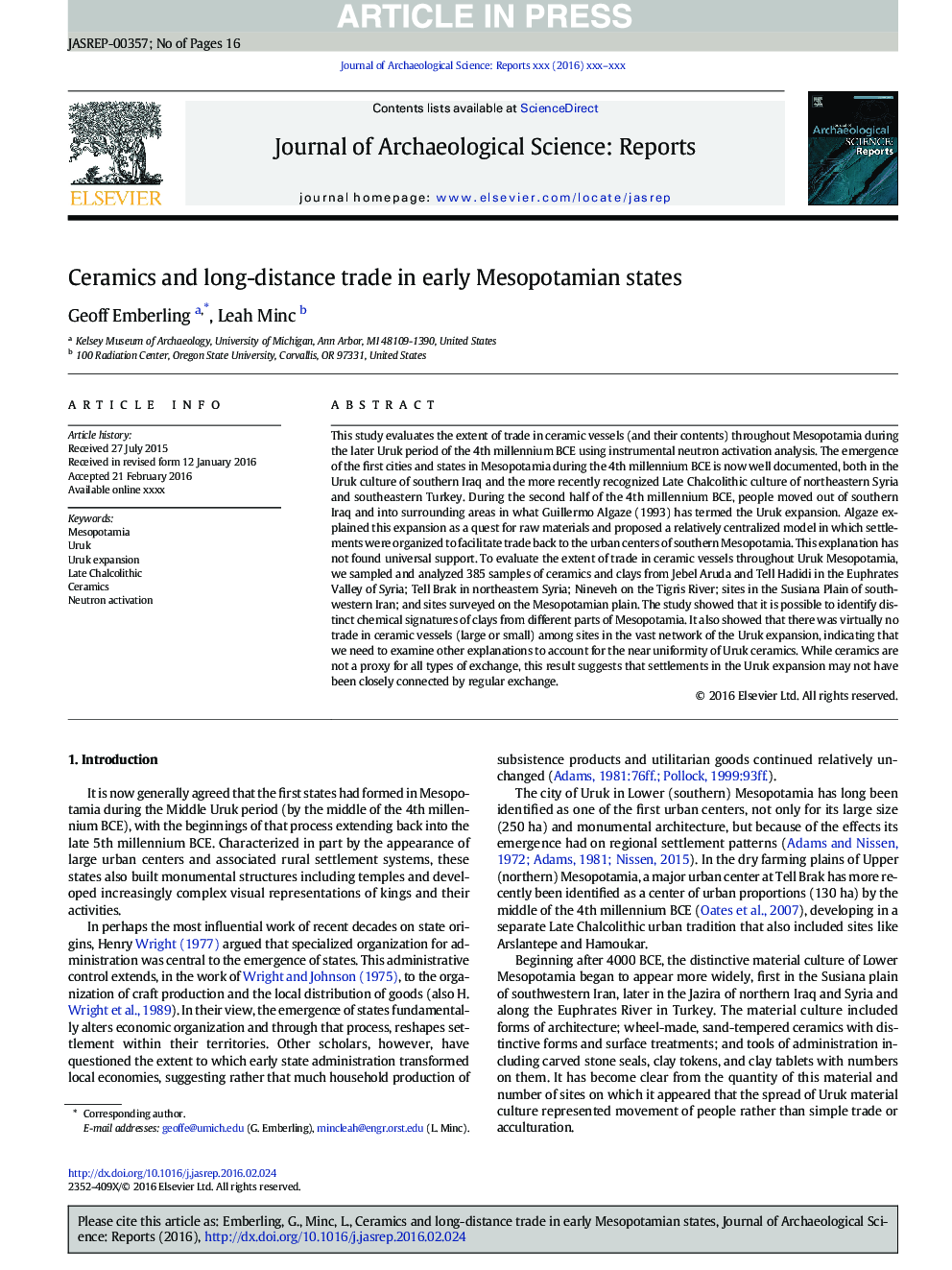| Article ID | Journal | Published Year | Pages | File Type |
|---|---|---|---|---|
| 7445875 | Journal of Archaeological Science: Reports | 2016 | 16 Pages |
Abstract
This study evaluates the extent of trade in ceramic vessels (and their contents) throughout Mesopotamia during the later Uruk period of the 4th millennium BCE using instrumental neutron activation analysis. The emergence of the first cities and states in Mesopotamia during the 4th millennium BCE is now well documented, both in the Uruk culture of southern Iraq and the more recently recognized Late Chalcolithic culture of northeastern Syria and southeastern Turkey. During the second half of the 4th millennium BCE, people moved out of southern Iraq and into surrounding areas in what Guillermo Algaze (1993) has termed the Uruk expansion. Algaze explained this expansion as a quest for raw materials and proposed a relatively centralized model in which settlements were organized to facilitate trade back to the urban centers of southern Mesopotamia. This explanation has not found universal support. To evaluate the extent of trade in ceramic vessels throughout Uruk Mesopotamia, we sampled and analyzed 385 samples of ceramics and clays from Jebel Aruda and Tell Hadidi in the Euphrates Valley of Syria; Tell Brak in northeastern Syria; Nineveh on the Tigris River; sites in the Susiana Plain of southwestern Iran; and sites surveyed on the Mesopotamian plain. The study showed that it is possible to identify distinct chemical signatures of clays from different parts of Mesopotamia. It also showed that there was virtually no trade in ceramic vessels (large or small) among sites in the vast network of the Uruk expansion, indicating that we need to examine other explanations to account for the near uniformity of Uruk ceramics. While ceramics are not a proxy for all types of exchange, this result suggests that settlements in the Uruk expansion may not have been closely connected by regular exchange.
Related Topics
Social Sciences and Humanities
Arts and Humanities
History
Authors
Geoff Emberling, Leah Minc,
